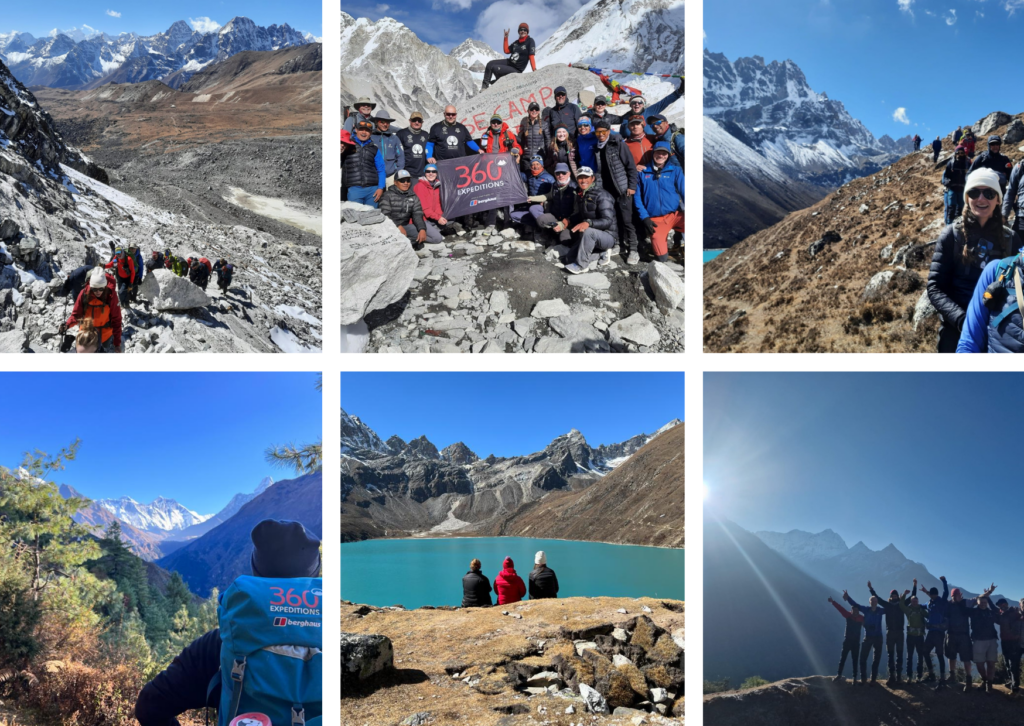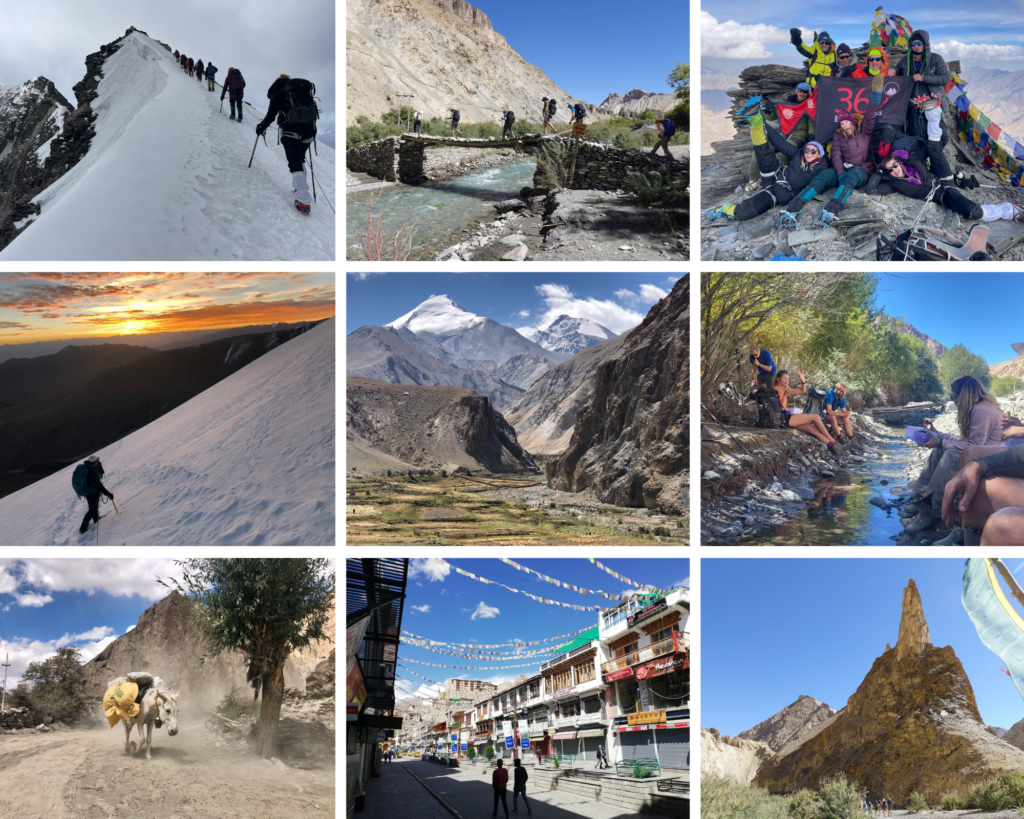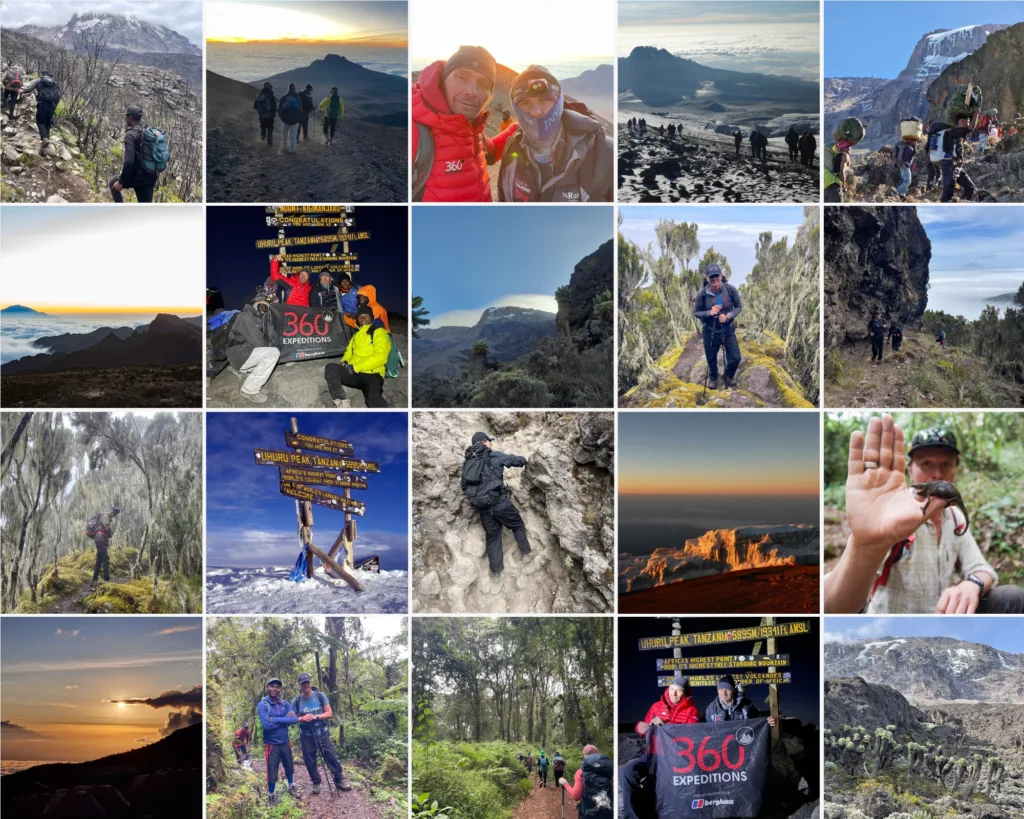Kilimanjaro is often the first 5,000+ metre peak climbers tick off their list. It is an epic challenge, a fantastic introduction to expedition-style trekking and a great way to accustom yourself to altitude. It is also a gateway expedition. By that, we mean it opens up a whole world of possibilities and encourages trekkers to take the next step in their journey. It demonstrates you can achieve these big mountain challenges and love doing so. It makes you realise you want more – it is not uncommon for trekkers to return from Kili and immediately start the search for their next expedition.
So where do you go next? Which mountain adventure is a logical progression? In this article, we answer these questions, highlighting two excellent expeditions we believe are the perfect next step for trekkers looking to take things up a level. What will it be? Everest Base Camp via Gokyo Lakes or Kang Yatse II?
What makes a good Kilimanjaro follow-up expedition?
Before we jump into the finer details of our two chosen expeditions, it is worth taking a moment to discuss what makes an expedition a great follow-up to Kilimanjaro. Trekkers looking to progress from Kili often want more. But more what? More of a physical challenge? More of an adventurous feel? More breathtaking landscapes? More camaraderie and meeting like-minded people? You may want all of these. But you may also feel like some aspects of the Kili expedition were more enjoyable than others.
Many trekkers do not necessarily want to push themselves to their physical limits in pursuit of astounding natural beauty. Others love the sense of achievement that accompanies an expedition where you have to dig incredibly deep and truly test your capabilities. Understanding what you enjoyed about Kili and what you want from your next expedition will help ensure you make a good choice.
Everest Base Camp
Everest Base Camp (EBC) is the departure point for climbers heading to the summit of the world’s highest peak. But it is also a fascinating trekking destination. So much so that the Everest Base Camp Trek is now one of the most iconic trekking routes on the planet. Everest Base Camp via Gokyo Lakes offers two weeks of stunning trekking, where trekkers ascend through staggeringly beautiful Himalayan landscapes as they wind their way past turquoise lakes towards Everest. Reaching EBC is an achievement in itself and an excellent way to challenge yourself with a longer expedition. Upon reaching Base Camp, you then descend via the popular Khumbu valley, arriving back to Lukla having enjoyed a full circular route. It is an experience that stimulates every one of the senses and is transportative and transformative.

Who is it for?
While the Everest Base Camp Trek is physically challenging, it is not technical. Good physical preparation is essential and the altitude will affect how difficult you find the trekking. It makes the expedition ideal for trekkers who are not necessarily driven by technical trekking and mountaineering and who prefer to focus on experiencing the Himalayan mountains, centring on the local culture and immersing themselves in the natural environment. EBC is accessible to all trekkers with a good level of fitness and considered on par with Kilimanjaro. However, it is longer and involves steady acclimatisation.
The routes
First off, there are two Everest Base Camps. One on the north side (based in Tibet) and the other on the south (based in Nepal). In almost all cases, people talking about Everest Base Camp in the context of “The EBC Trek” are referring to the south base camp in Nepal. Like many expedition destinations, there are also several routes to EBC. The “Classic Route” (also known as the Khumbu) is the most popular. It takes you from Lukla to Everest Base Camp via Tengboche, Pangboche, Lobuche and Gorak Shep and is an out-and-back route that covers approximately 106 km. It is the busiest route and you can compact it into 12 days, making it a feasible option for time-crunched trekkers. However, we do not recommend doing so, as altitude sickness is a very real thing and cramming your trek into fewer days is neither ideal nor fun.
We highly recommend the Gokyo Lakes route. Much quieter than the Classic Route, this alternative takes you up to the irresistibly scenic Gokyo Lakes. Starting off in the warmer lower hills, where you cross deep gorges on high swinging bridges, you pass rich, lush farmland before resting a few days at Namche Bazaar, the Sherpa capital. Here, you branch off left to the more remote Gokyo Valley and lakes.
Several exciting high passes stand between you and the “village” of Gorak Shep, which is the launchpad for the final few days of trekking to Base Camp. Heading out via the Gokyo region not only ensures you experience quieter days but also enables you to see some of the big 8000m peaks – Cholatse, Makalu, Lhotse, Nuptse, Everest, Changtse and Pumori are only visible from this side! The journey is quite spectacular and in, in our opinion, the best EBC experience.
Kang Yatse II
Kang Yatse II may not be quite as well known as EBC. But, as a potential follow-up to Kilimanjaro, it is just as exciting a proposition. Kang Yaste is in the majestic Himalayan range and is the most prominent peak in Ladakh’s Markha Valley in northwest India. The views from the climb and summit are breathtaking. Ladakh is also a land of contrasts. The plateau is one of the highest and driest inhabited regions on Earth, a semi-desert where Buddhism meets Islam, India meets Tibet and the Himalayas meet the Karakoram. Dotted with small villages and ancient monasteries, high mountain panoramas blend into blue skies and vibrant festivals erupt with cheerful regularity.
Kang Yatse II tops out at 6,250 metres and offers the chance for trekkers to enter the 6,000+ metre club. For those who enjoy a few metrics (we all do to a certain extent – everyone wants to know how far they have walked in a day), this makes it a clear post-Kili favourite. Going from 5,895 metres to 6,000+ metres just makes sense. Although our goal is the summit, the trek to base camp is simply mind blowing and arguably the expedition highlight. We recognise not everyone wants to do the final eight hours to the summit and trekkers can stop at basecamp and enjoy a more leisurely night! This opens the expedition to many more trekkers, creating a fantastic buzz around camp.

Who is it for?
Kang Yatse II is many people’s first taste of high altitude expedition-style trekking. And there really isn’t a better mountain for it. It is, technically, a straightforward mountain and considered one of the ‘easier’ 6,000 metre peaks. On summit night there will be snow which makes it for an exciting summit, as you will certainly be using crampons and a rope for safety. It makes Kang Yatse II a brilliant option for anyone who wants to introduce a little more technical complexity and experience a challenging summit attempt that is an excellent stepping stone to trickier ascents.
But remember, it is not always about the summit! Summit or not, expeditions are hugely rewarding. They are life changing and character-building. They totally refresh every part of our being. And the Kang Yatse II expedition is crammed full of culture, foods, colours and Buddhist traditions that ensure you enjoy the experience. This makes it a perfect post-Kilimanjaro adventure, whether you reached the summit of Kilimanjaro or not.
The route
The Kang Yatse II approach is one of the most remarkable you will ever have the pleasure of trekking. A phenomenal introduction to India’s mountains, the trek to base camp is unforgettable and many trekkers attend Kang Yatse II expeditions for this experience alone. Unfurling over approximately two weeks, the expedition will expose you to challenging terrain, captivating local cultures and some of the finest mountain trails on earth.
Trekking with 360 Expeditions
If you are considering following up your recent Kilimanjaro adventure with either of these two options, we recommend reading our in-depth Everest Base Camp and Kang Yatse II guides to get an even better idea of what each involves. You can also head to the specific 360 EBC Gokyo Lakes and Kang Yatse II expedition pages for a detailed itinerary and answers to many of our most frequently asked questions.
You could also take a look at the following options:
Or a shorter closer to home (cheaper) expedition such as the
